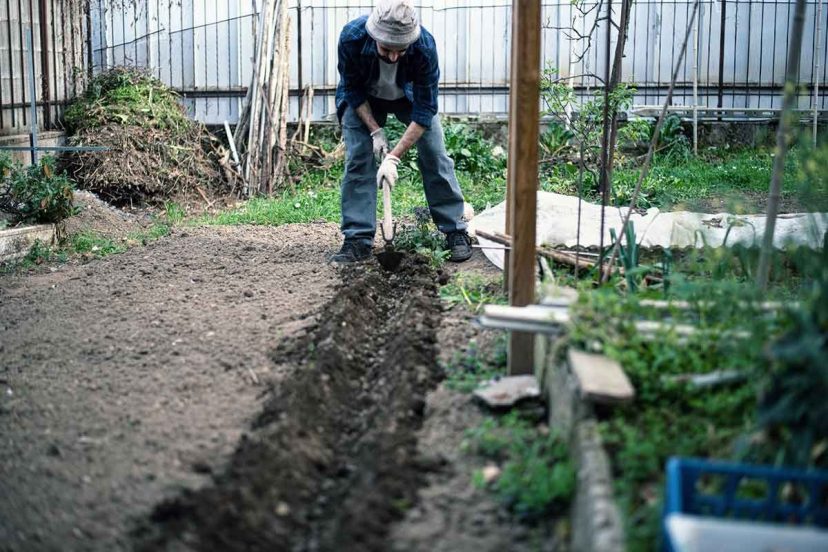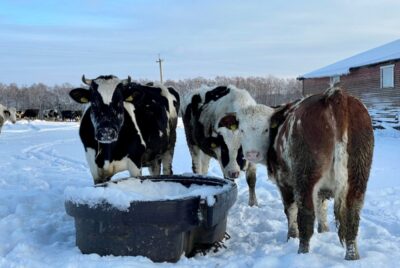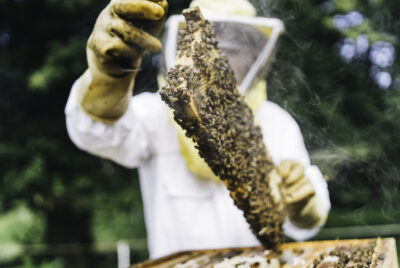Homesteading Garden Layout
"We may earn a commission from purchases made using our links. Please see disclaimer."
As an enthusiast and advisor in the realm of homesteading, I understand the significance of a well-designed garden layout. A thoughtfully planned garden can not only enhance the visual appeal of your homestead but also contribute to its productivity and sustainability. In this article, I will provide you with helpful suggestions and reasons for creating an efficient homesteading garden layout.
Introduction
Homesteading, in essence, is a lifestyle that embraces self-sufficiency and sustainable living. It involves growing your own food, raising livestock, and creating a harmonious relationship with nature. A homesteading garden plays a vital role in this endeavor, providing a source of fresh produce and serving as a sanctuary for tranquility and connection with the earth not to mention studies show it is very healthy for you.
What is Homesteading?
Homesteading refers to the practice of living off the land and reducing reliance on external resources. It involves creating a self-sustaining environment where individuals or families can produce their own food, generate energy, and adopt eco-friendly practices. A central component of homesteading is cultivating a productive and well-maintained garden.
Benefits of Homesteading
Homesteading offers numerous benefits, both tangible and intangible. By growing your own food, you gain access to fresh, nutritious produce free from harmful chemicals. It also allows you to reduce your ecological footprint, promote biodiversity, and save money on grocery bills. Furthermore, homesteading fosters a sense of self-reliance, resilience, and connection with nature.
Additionally, homesteading can foster a deeper understanding and appreciation for the natural cycles and processes of the earth. By engaging in activities like composting and natural pest control, individuals become more attuned to ecological balances. The skills acquired through homesteading such as carpentry, gardening, and energy management are invaluable and can be passed down through generations, creating a legacy of self-sufficiency and environmental stewardship.
Moreover, the physical activity involved in homesteading tasks contributes to improved physical health. Lastly, homesteading communities often form tight-knit social bonds, offering a sense of belonging and support that can be very fulfilling.
Importance of a Well-Designed Garden
 A well-designed garden serves as the foundation for a successful homesteading endeavor. It optimizes the use of space, facilitates efficient cultivation, and promotes healthy plant growth. With proper planning and organization, you can create a garden that maximizes productivity, minimizes maintenance efforts, and embodies the principles of sustainability.
A well-designed garden serves as the foundation for a successful homesteading endeavor. It optimizes the use of space, facilitates efficient cultivation, and promotes healthy plant growth. With proper planning and organization, you can create a garden that maximizes productivity, minimizes maintenance efforts, and embodies the principles of sustainability.
Furthermore, a well-designed garden can be a source of beauty and serenity, providing a peaceful retreat from the stresses of modern life. It can also serve as an educational tool, offering learning experiences in biology, ecology, and agriculture. Through meticulous design, a garden can also support wildlife, creating a habitat for beneficial insects, birds, and other creatures.
The aesthetics of a well-designed garden can significantly enhance the overall appeal and value of the property. Lastly, a well-planned garden can also provide medicinal plants and herbs, contributing to a natural pharmacy right in one’s backyard.
Factors to Consider for a Homesteading Garden Layout
Considering the microclimates within your land can further refine your garden layout. Accessibility for maintenance, harvesting, and emergency measures is another crucial aspect to consider in your layout planning. Understanding the growth habits and requirements of chosen crops will aid in designing a layout that accommodates different plants’ needs. Additionally, considering future expansions or modifications to the garden layout at the planning stage can save time and resources in the long run. Lastly, incorporating elements like windbreaks, shade structures, and water features can also play a significant role in creating a favorable garden environment.
Analyzing Available Space
 Before diving into designing your homesteading garden, it is crucial to assess the available space. Consider the size, shape, and topography of your land. Identify areas with optimal sunlight exposure and potential constraints such as slopes or shade from buildings or trees. This analysis will guide your decisions on layout and crop selection.
Before diving into designing your homesteading garden, it is crucial to assess the available space. Consider the size, shape, and topography of your land. Identify areas with optimal sunlight exposure and potential constraints such as slopes or shade from buildings or trees. This analysis will guide your decisions on layout and crop selection.
In addition to understanding the physical characteristics of your land, it’s also beneficial to observe the natural elements such as wind direction and water flow patterns as they will impact your garden.
Understanding the soil quality in different areas will guide you in planning soil improvement strategies. It’s also wise to consider the proximity to resources like water sources, compost piles, and tool storage when analyzing space.
Furthermore, assessing the potential for expanding your garden in the future or accommodating other homesteading elements like chicken coops or greenhouses is crucial. Lastly, considering the visibility and aesthetics from different vantage points on your property can influence how you’ll design and utilize the available space.
Choosing Suitable Crops and Plants
 Selecting the right crops and plants for your homesteading garden is key to its success. Take into account your region’s climate, soil type, and growing season. Choose crops that are well-suited to your area and align with your dietary preferences. Consider a mix of fruits, vegetables, herbs, and flowers to create a diverse and vibrant garden ecosystem.
Selecting the right crops and plants for your homesteading garden is key to its success. Take into account your region’s climate, soil type, and growing season. Choose crops that are well-suited to your area and align with your dietary preferences. Consider a mix of fruits, vegetables, herbs, and flowers to create a diverse and vibrant garden ecosystem.
Diversifying your plant selection can also enhance the resilience of your garden against pests and diseases. Additionally, selecting perennial crops can provide long-term returns on your efforts with less annual maintenance. It’s also wise to consider the marketability of certain crops if you plan to sell your produce locally.
Furthermore, researching and choosing plants that have a proven track record of success in similar climate zones can significantly increase your chances of a bountiful harvest. Lastly, consider involving family members in the selection process, ensuring that the garden will provide foods and herbs everyone will enjoy.
Companion Planting
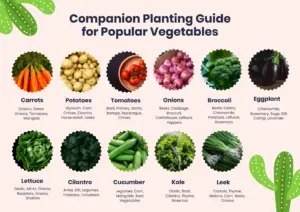 Companion planting involves strategically placing compatible plants next to each other to promote mutual growth benefits. Certain plant combinations can deter pests, improve pollination, and enhance nutrient uptake. For example, planting marigolds alongside tomatoes can repel harmful insects, while beans and corn can provide support for each other to maximize vertical space utilization.
Companion planting involves strategically placing compatible plants next to each other to promote mutual growth benefits. Certain plant combinations can deter pests, improve pollination, and enhance nutrient uptake. For example, planting marigolds alongside tomatoes can repel harmful insects, while beans and corn can provide support for each other to maximize vertical space utilization.
Beyond pest control and pollination, companion planting can also help in soil improvement. For example, leguminous plants like peas and beans can fix nitrogen in the soil, benefiting nitrogen-hungry plants planted nearby in subsequent seasons. Understanding the root depth and nutrient needs of companion plants can help in creating combinations that do not compete but complement each other.
Additionally, companion planting can also be utilized to create aesthetically pleasing arrangements, combining colors, textures, and forms. Lastly, companion planting with flowers and herbs can also attract a variety of beneficial insects, further promoting a balanced ecosystem within your garden.
Crop Rotation
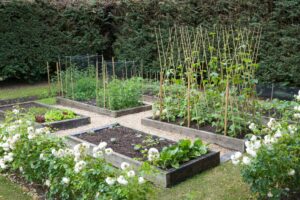 Implementing crop rotation techniques in your homesteading garden is vital for maintaining soil health and preventing the buildup of pests and diseases. Rotate crops within different plant families to minimize nutrient depletion and reduce the risk of pathogens. This practice also helps break pest life cycles, improving overall garden productivity.
Implementing crop rotation techniques in your homesteading garden is vital for maintaining soil health and preventing the buildup of pests and diseases. Rotate crops within different plant families to minimize nutrient depletion and reduce the risk of pathogens. This practice also helps break pest life cycles, improving overall garden productivity.
Besides pest and disease control, crop rotation can also help in improving soil structure and fertility over time. Planning a rotation schedule that includes cover crops can significantly contribute to soil health, preventing soil erosion and promoting organic matter accumulation.
Also, by understanding the life cycles of the plants you are growing, you can time your rotations to take full advantage of the growing season. Furthermore, crop rotation can also be planned in a way to ensure there is always something to harvest, providing a continuous supply of fresh produce.
Lastly, documenting and reviewing the outcomes of different rotation schemes can provide valuable insights for optimizing future garden plans.
Efficient Watering and Irrigation
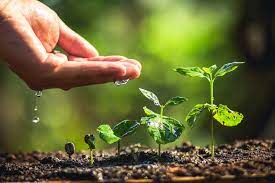 Water management is crucial in a homesteading garden, especially during periods of drought or water scarcity. Install an efficient irrigation system that targets the root zones of plants, minimizing water waste. Utilize mulch to retain soil moisture and reduce evaporation. Consider collecting rainwater and utilizing greywater to further reduce reliance on external water sources.
Water management is crucial in a homesteading garden, especially during periods of drought or water scarcity. Install an efficient irrigation system that targets the root zones of plants, minimizing water waste. Utilize mulch to retain soil moisture and reduce evaporation. Consider collecting rainwater and utilizing greywater to further reduce reliance on external water sources.
Incorporating a variety of watering systems like drip irrigation, soaker hoses, or rain barrels can cater to the different water needs of various plants. Understanding the water needs of your plants and adjusting your watering schedule accordingly can prevent over-watering and promote healthier plant growth.
Additionally, monitoring and maintaining your irrigation systems regularly can ensure they are working efficiently and conserving water. Implementing automated watering systems can save time and ensure consistent watering, especially during hotter periods.
Lastly, educating oneself about the signs of over-watering and under-watering, and being prepared to adjust your irrigation practices as needed, is crucial for efficient water management.
Maximizing Sunlight
 Most plants thrive in sunlight, so it’s important to maximize sun exposure in your garden. Place taller plants and structures on the north side to prevent shading of smaller plants. Trim or remove overhanging branches that cast shadows. By optimizing sunlight, you can ensure healthy plant growth and improve overall yield.
Most plants thrive in sunlight, so it’s important to maximize sun exposure in your garden. Place taller plants and structures on the north side to prevent shading of smaller plants. Trim or remove overhanging branches that cast shadows. By optimizing sunlight, you can ensure healthy plant growth and improve overall yield.
The angle of the sun changes with the seasons, so understanding solar patterns throughout the year can aid in placing plants optimally. Using reflective surfaces like white fences or gravel can also help in increasing sun exposure to plants that require more light. Additionally, understanding the sunlight needs of different plants can guide you in placing them in suitable spots, ensuring they receive the necessary light for growth.
Furthermore, consider using shade cloth or other shading devices to protect sensitive plants from the harsh afternoon sun during the warmer months. Lastly, regular monitoring and adjusting the garden layout to adapt to changing sunlight conditions can significantly benefit plant growth and productivity.
Utilizing Vertical Space
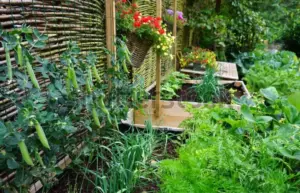 In a homesteading garden, utilizing vertical space is a smart strategy to maximize productivity, especially if you have limited land area. Grow climbing plants such as beans, cucumbers, or squash on trellises or fences. Utilize vertical gardening techniques like wall-mounted planters or hanging baskets to create a lush and space-efficient garden.
In a homesteading garden, utilizing vertical space is a smart strategy to maximize productivity, especially if you have limited land area. Grow climbing plants such as beans, cucumbers, or squash on trellises or fences. Utilize vertical gardening techniques like wall-mounted planters or hanging baskets to create a lush and space-efficient garden.
Vertical gardening also allows for better air circulation among plants, which can help in preventing fungal diseases. It can also provide easier access for harvesting and monitoring for pests and diseases. Moreover, vertical structures can also be used to create microclimates; for example, shading tender plants in summer or acting as windbreaks. Additionally, vertical gardening can also offer aesthetic benefits, allowing for the creation of green walls, arches, and other visually pleasing structures.
Lastly, involving creative designs and materials in your vertical structures can add a personal touch and enhance the overall appeal of your garden.
Creating Functional Pathways and Zones
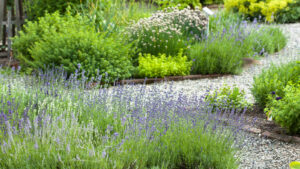 Designing functional pathways and zones within your garden enhances accessibility and organization. Determine the locations of main pathways, which should be wide enough for easy movement and maintenance. Consider dividing your garden into zones based on plant type, growth patterns, or watering needs. This zoning approach simplifies care and optimizes resource allocation.
Designing functional pathways and zones within your garden enhances accessibility and organization. Determine the locations of main pathways, which should be wide enough for easy movement and maintenance. Consider dividing your garden into zones based on plant type, growth patterns, or watering needs. This zoning approach simplifies care and optimizes resource allocation.
Incorporating signage and markers within the garden can aid in easy navigation and maintenance scheduling. The layout of pathways and zones should also consider the efficiency of operations, such as minimizing distances between frequently accessed areas.
Considering the drainage and ensuring that pathways remain accessible even during wet conditions is crucial for uninterrupted garden operations. Moreover, the pathways and zones can be designed to be aesthetically pleasing, contributing to the overall appeal of the garden.
Lastly, the zoning approach can also aid in pest and disease management, by isolating affected areas to prevent spread.
Implementing Sustainable Practices
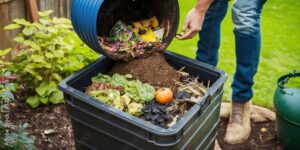 As a homesteader, embracing sustainable practices is paramount. Employ organic gardening methods to minimize the use of synthetic fertilizers and pesticides. Use compost and natural soil amendments to enrich soil fertility. Embrace permaculture principles, such as incorporating native plants and supporting beneficial insects. By prioritizing sustainability, you contribute to the overall health of your garden and the surrounding ecosystem.
As a homesteader, embracing sustainable practices is paramount. Employ organic gardening methods to minimize the use of synthetic fertilizers and pesticides. Use compost and natural soil amendments to enrich soil fertility. Embrace permaculture principles, such as incorporating native plants and supporting beneficial insects. By prioritizing sustainability, you contribute to the overall health of your garden and the surrounding ecosystem.
Furthermore, sustainable practices also extend to water and waste management, where rainwater harvesting, greywater systems, and composting toilets can significantly reduce a homestead’s environmental impact. By choosing to grow heirloom and native plant varieties, homesteaders can also contribute to preserving biodiversity.
Employing renewable energy sources like solar or wind power is another sustainable practice that aligns with homesteading values, reducing reliance on fossil fuels. Moreover, sustainable practices in a homesteading garden also promote a circular economy, where waste is minimized, and resources are reused and recycled.
Lastly, through sustainable homesteading practices, individuals can significantly contribute towards broader societal goals of environmental conservation and sustainable living.
Conclusion
In conclusion, a well-designed homesteading garden layout is essential for a successful and fulfilling homesteading experience. By carefully considering factors such as available space, suitable crops, companion planting, crop rotation, efficient watering, sunlight optimization, vertical gardening, functional pathways, and sustainable practices, you can create a garden that thrives, supports your self-sufficiency goals, and harmonizes with nature.
FAQs – Frequently Asked Questions
Q1: How much space do I need for a homesteading garden?
A1: The space required for a homesteading garden depends on various factors, including your goals, available land, and crop selection. Even a small backyard or a few raised beds can be sufficient to start your homesteading journey.
Q2: Can I practice homesteading in an urban environment?
A2: Absolutely! Urban homesteading is gaining popularity, and you can adapt various techniques such as container gardening, vertical gardening, and rooftop gardens to create a productive homesteading space in urban settings.
Q3: How do I deal with pests and diseases in my homesteading garden?
A3: Implement integrated pest management strategies such as companion planting, crop rotation, and natural pest control methods like beneficial insects, traps, and organic sprays. Regular monitoring and prompt action can help prevent and manage pest and disease issues.
Q4: Is it necessary to have a separate area for composting?
A4: While having a designated area for composting is beneficial, it is not mandatory. You can use compost bins, tumblers, or even vermicomposting systems to efficiently compost kitchen scraps and garden waste within the available space.
Q5: How can I extend the growing season in my homesteading garden?
A5: Extending the growing season can be achieved through techniques like using cold frames, hoop houses, or row covers. These structures provide protection from frost and create a microclimate that allows you to grow crops earlier in the spring or later in the fall.
Final Thoughts
Remember, your homesteading garden is a reflection of your dedication to self-sufficiency and sustainable living. Enjoy the journey, experiment with different approaches, and relish the bountiful rewards of your labor. Happy homesteading!

